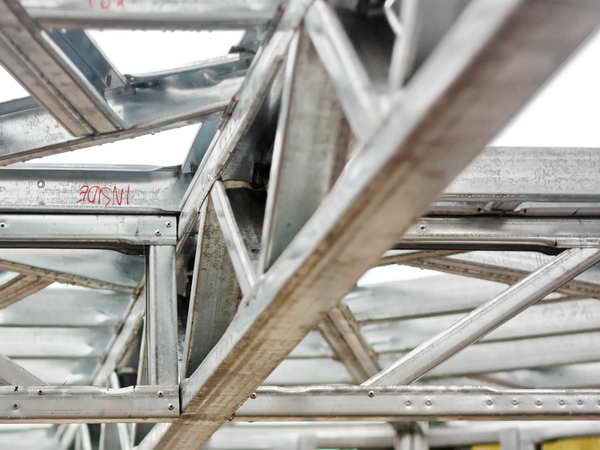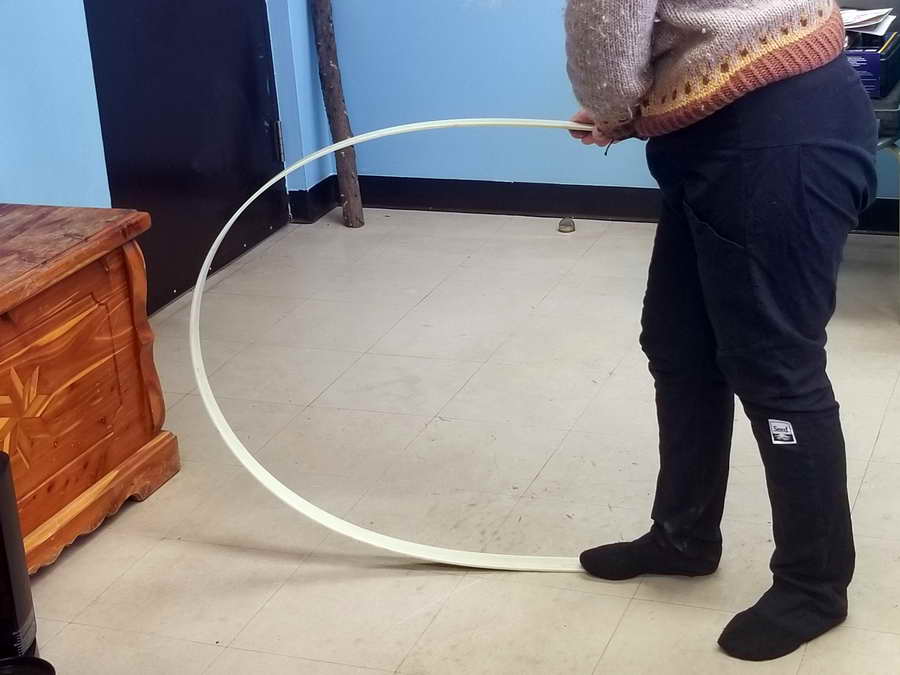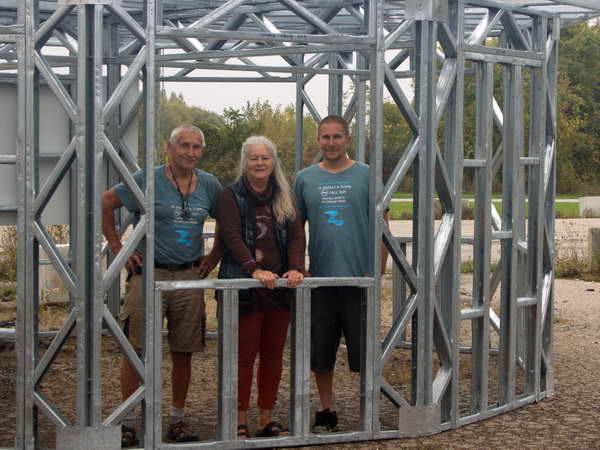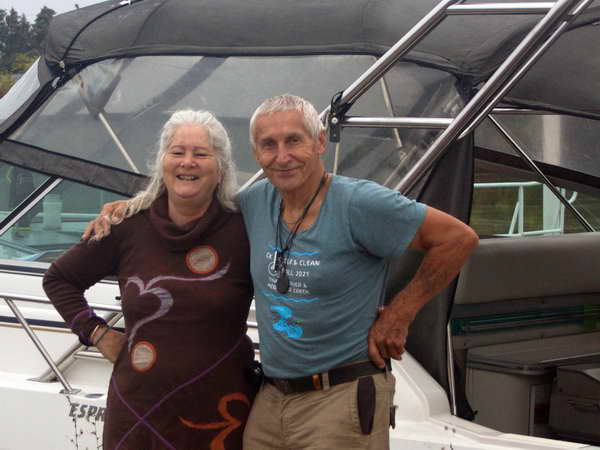[Please note, this article was written in 2022 before there was any knowledge of litigation. The article appears as originally written. I have no intention to be involved in any discussion around litigation.]
In 2019 a new company made its home in Wallaceburg, Ontario. The news around Twin Dolphin/Strong House Canada was that it intended to build floating homes, which garnered the moniker “the houseboat people” for the founders, Alex Topol and his son Mischa. Sally Joyce is an ever-present part of the team as well as the creative and environmental consultant team member. Now in the midst of their first customer builds, they employ four people and are planning for managed growth as their products hit the market.
Their floating home designs are actually an offshoot of an idea they had to protect homes in flood-prone areas where people tend to build on stilts. It is a solution that works but also creates aesthetic and accessibility issues. Alex notes, “Not everyone wants to be 20 feet high.” The solution that he and Sally envision is to build a foundation that is actually a barge and then put the house on top of that. If you build it between poles that keep it in one place then, “When the water comes, it will rise,” he points out.
Based on that “house on a barge” concept, they have created and offer a number of floating home designs. Technically known as Non-Powered Vessels, these homes are not houseboats in the traditional sense. They are, essentially, tiny homes built on an oversized floating platform large enough to provide outdoor deck space. Sally says, “In most conventional floating homes, the home is built almost exactly to the edge of the platform, leaving very little outdoor space. We want the indoor shelter for days that aren’t the greatest, but also lots of outdoor space. Quality of life is very important. ”
The floating platform is built with an internal frame of light galvanized steel and then sealed with the company’s pultrusion panels. These are fade-resistant, will not rust, and can be created in different colours and textures. Once delivered, it will be anchored in place with stabilizers, giving it the ability to rise and fall with the water level while staying securely in place.

Galvanized Steel Framing
The living area is constructed with a light structural steel frame as well, sided with the panels, and finished with standard doors, windows and interior products to create attractive and cozy houses that float. The interior framing allows many designs, from smaller one-level houses to two-story structures. There are even designs built around 10 sided domes that can incorporate a loft area above to free up living space on the lower levels. Their current customer build boasts over 1100 sq/ft of interior living space within two domed structures joined by a central room.
Their designs can incorporate just about as much off-the-grid living as a customer could want. Their small size and relative portability also offer the opportunity for landowners who have water on their property to put them in as little floating Airbnb locations. Alex and Sally believe that they could fill unused marina space and turn those slips into revenue-generating rentals. Even old gravel pits with their deep, cold lakes could be repurposed as natural areas with floating accommodations.
They also see their homes as being a way to help alleviate the housing crisis facing North America. The structures don’t have to be built on floating platforms which makes them an option within the Tiny Homes movement. It is an idea that they have put forward and hope to be able to develop in the future.

One half of a two structure of building on the deck framing. There is a similar structure behind the camera, and they will be connected with an enclosed area between them. Also, a loft and storage are will be built on top.
Surprisingly, the concepts behind Twin Dolphin/Strong House Canada did not start with houseboats. It all comes down to the type of composite material, and the way that material is produced, that is the foundation of their vision. Alex explains, “I built a technology [in Europe] which is related to composites. It’s called a pultrusion machine.” It is a game-changing technology without a lot of competition. He notes, “There are not a lot of manufacturers in Canada making composites.”
Pultrusion produces a composite material with a few significant differences from extruded composites. In pultrusion, fibres are pulled through a basin of resin. Then, this wet, sticky mass gets pulled through a heated die. The die creates the desired shape while the heat hardens the material. What comes out is a continuous product that can be shaped in many ways, and because of the fibres it now has the strength to be used in structural applications as well–all while remaining incredibly flexible.

A demonstration of the flexibility of the pultrusion material.
While it may be the houseboats that have attracted people’s initial attention, Alex and Sally actually envisioned their pultrusion material as a way to tackle environmental issues. This technology, they believe, is uniquely suited to provide new solutions to people who live with the risks that high water brings. In some areas, people build houses on platforms, elevated meters above the ground. In others, the water’s edge gets lined with steel or concrete cribbing or giant armour stones to slow erosion.
Alex says, “A seawall is typically what you see made out of steel on the edge. It’s to protect from erosion. For us, protection [should start] way out in the lake. We are proposing buffers that are flexible, reducing the tonnage of water coming to the shore.”
Picture seaweed. It grows from the bottom and sways back and forth in the current. That’s sort of the concept behind the pultrusion buffers. While much wider than a strand of seaweed, they can rise out of the ground, supported by a framework with their tops below the surface of the water. As waves pass over them, they flex and bend in the direction that the wave is moving. This provides resistance and absorbs some of the wave’s energy. It’s not a break wall, it’s a resistance device, dissipating energy before it hits the shoreline, reducing wave height and reducing erosion.
The beauty of this idea is its flexibility (no pun intended). The buffers, essentially tall and wide panels, can be installed underwater with different levels of resistance. Different panels can be angled in different directions to compensate for different wave directions. Because their tops are below the surface, they would not harm the view, nor interfere with recreational boating. As they are not mammoth, solid structures like a breakwater, wildlife can still mingle amongst the panels.
Erosion along the water’s edge would still be a challenge, though. Here, pultrusion technology is strong enough to offer an upgrade to the current concrete and rusty steel solution that is typically offered. It is a solution, Sally says, that can also offer unique environmental and design options. She says, “When we do the actual sea walls, where the shore and the water meet, let’s do them with habitat in mind. Let’s do them with little pockets for creatures and plants.” The ability to shape a pultrusion product allows the opportunity to build nearly any shape into the structure from flower beds to habitat niches, something that is not practical when building conventional sea walls.
There is an opportunity to go one step farther, too. They envision a floodwall near the edge of the water, behind the break wall, on landscapes that need flood protection. “The floodwall will be placed as a sidewalk,” Alex says with a grin. When flooding is likely to occur, the sidewalk can then be propped up as a barrier. It will have a channel to sit in, locking it to the ground while the vertical surface deflects the incoming water. The intent is for it to have multiple applications. Most of the time it is just a nice walkway on the property. When you need it, it becomes a floodwall.
These ideas are not ready for production quite yet. The systems and concepts are still in the research and development stage. They are confident that pultrusion will be the right material to help tackle high water problems. Testing is happening in conjunction with the University of Windsor. They are also experimenting with new sources of fibres for the project, namely phragmites. Phragmites are the invasive plants that grow along most of the lakes and rivers in Ontario. If these could be found to be acceptable in some applications, they would become a renewable production material instead of simply a nuisance weed.

Alex, Sally and Mischa
Twin Dolphin/Strong House Canada is about more than houseboats. Alex, Mischa and Sally want their company to be part of the answer to many challenges facing our world, both globally and locally. They know people will be interested in the recreation aspects of what they have to offer, but the hope is that, along the way, this will help bring visibility to some of their other solutions for the challenges people face when confronting a changing environment.
If you would like to find out more, visit their Facebook Page for contact information.





Great article for leading edge technologies that all come together to deliver novel and forward thinking houses.
Have you started to build float homes? We have been thinking of that lifestyle
I would love to learn more
https://chathamvoice.com/2024/07/10/no-homes-412000-lost/
Here is an update.
(Note: This comment has been edited)